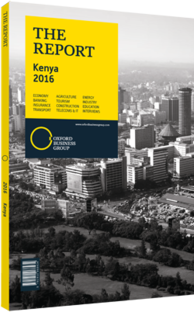Kenya and the East African Community create opportunities
The EAC, which comprises the member states Burundi, Kenya, Rwanda, Tanzania and Uganda, is one of the most integrated economic blocs on the continent, with intraregional trade accounting for roughly 30% of overall trade volumes – three times as much as the Economic Community of West African States or the Arab Maghreb Union in North Africa. The community has been pushing forward with closer ties, however. In 2008 members agreed to an extended free trade area, and in 2010 it began the process of launching a common market. In May 2014 the EAC launched Kenya’s National Electronic Single Window System to be used by all importers and exporters to boost transparency and collections across a revenue-sharing single Customs territory.
Indicators
The rationale behind increased integration is clear, given that the region offers sizeable potential for growth in terms of demand and production. The EAC has a combined population of 145.5m as of mid-2014, according to the EAC, and the population is growing at 2.6% per annum. The region’s combined GDP was $147.5bn in 2014, growing at 6.1% a year, according to the African Development Bank.
Tanzania has the biggest population at 47.2m, followed by Kenya at 43m, Uganda with 34.7m, Rwanda at 10.9m and Burundi with 9.7m. In 2014 agriculture made up 23.7% of regional GDP, trade and repairs accounted for 9.9%, and manufacturing for 8.2%. Intra-EAC trade totalled $3bn in exports, with Kenya and Uganda being net exporters.
Pay-Offs
The benefits of access to neighbouring markets are sizeable, particularly for Kenya, which accounts for the largest proportion of GDP and trade within the community. Apurva Sanghi, the World Bank’s lead economist and programme leader for Eritrea, Kenya, Rwanda and Uganda, told OBG, “Kenya is a big beneficiary of regionalisation and there is a lot more it can do.” He added that many Kenyan companies are already seizing the opportunities, including banks, manufacturers, supermarkets and security firms. Harmonising common market protocols can even tempt global manufacturers to set up shop.
Richard Mambo, the head of East African global financial institutions at Standard Bank, said, “Most of the corporates within this market are regional. Opportunities are immense, including among the growing middle class. East Africa could not be more exciting than now: Tanzania has discovered gas, Uganda discovered oil and Kenya the same. These are agrarian economies moving to fast-forward scenarios.”
The EAC is an important destination for Kenya’s manufacturing, according to a 2014 World Bank study. Manufactured goods, including food and beverages, tobacco and chemicals, made up 11% of GDP, but 26.4% of Kenya’s merchandise exports, of which 40% went to EAC members. However, it added that Kenya’s goods are increasingly losing ground in the EAC region to exports from India and China. Kenya’s share of EAC manufacturing imports was down from 9% in 2009 to 7% in 2013, including plastics, chemicals and paper. Maria Paulina Mogollon, private sector development specialist at the World Bank, said, “Kenya needs to increase the competitiveness of its manufacturing sector so that the country can grow, export and create much-needed jobs.”
Strengthening Ties
The drive towards closer integration is not just confined to economic and trade levels. The EAC’s four securities exchanges – Burundi does not yet have one – are members of the East African Securities Exchanges Association, which is forging better links, including cross listing and technology to move securities between central depositories and order-routing between automated trading systems. Similarly, planned power lines are to connect the region within three years. The Kenya-Uganda link is due by the end of 2016 and will connect Rwanda and Burundi. The Kenya-Tanzania link will be ready by 2018 and accompanied by a 500-KV high-voltage line.
You have reached the limit of premium articles you can view for free.
Choose from the options below to purchase print or digital editions of our Reports. You can also purchase a website subscription giving you unlimited access to all of our Reports online for 12 months.
If you have already purchased this Report or have a website subscription, please login to continue.

